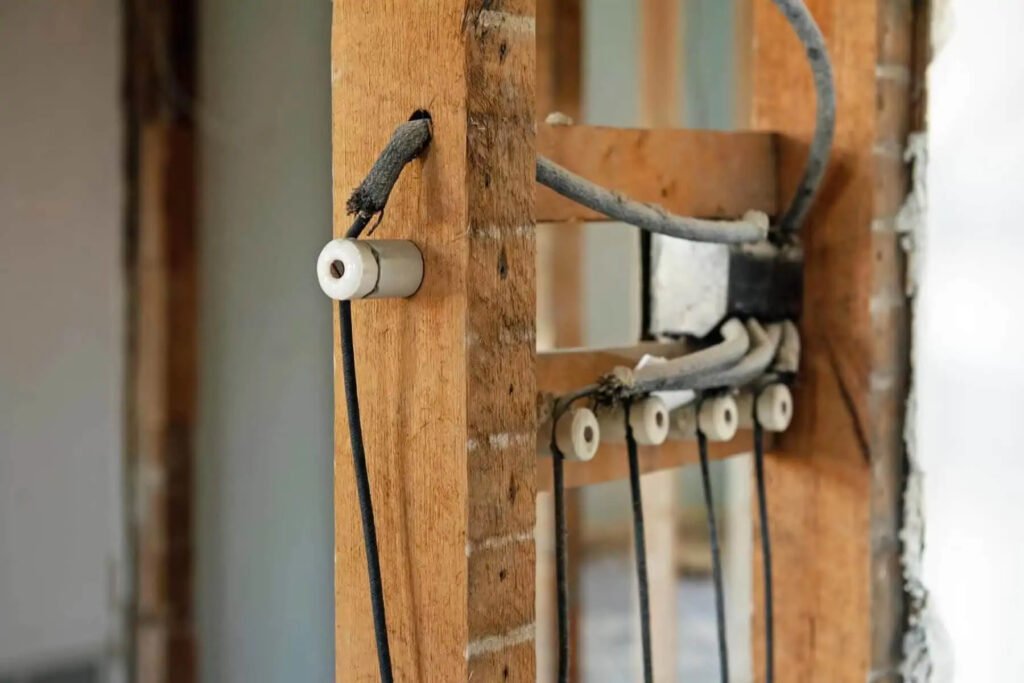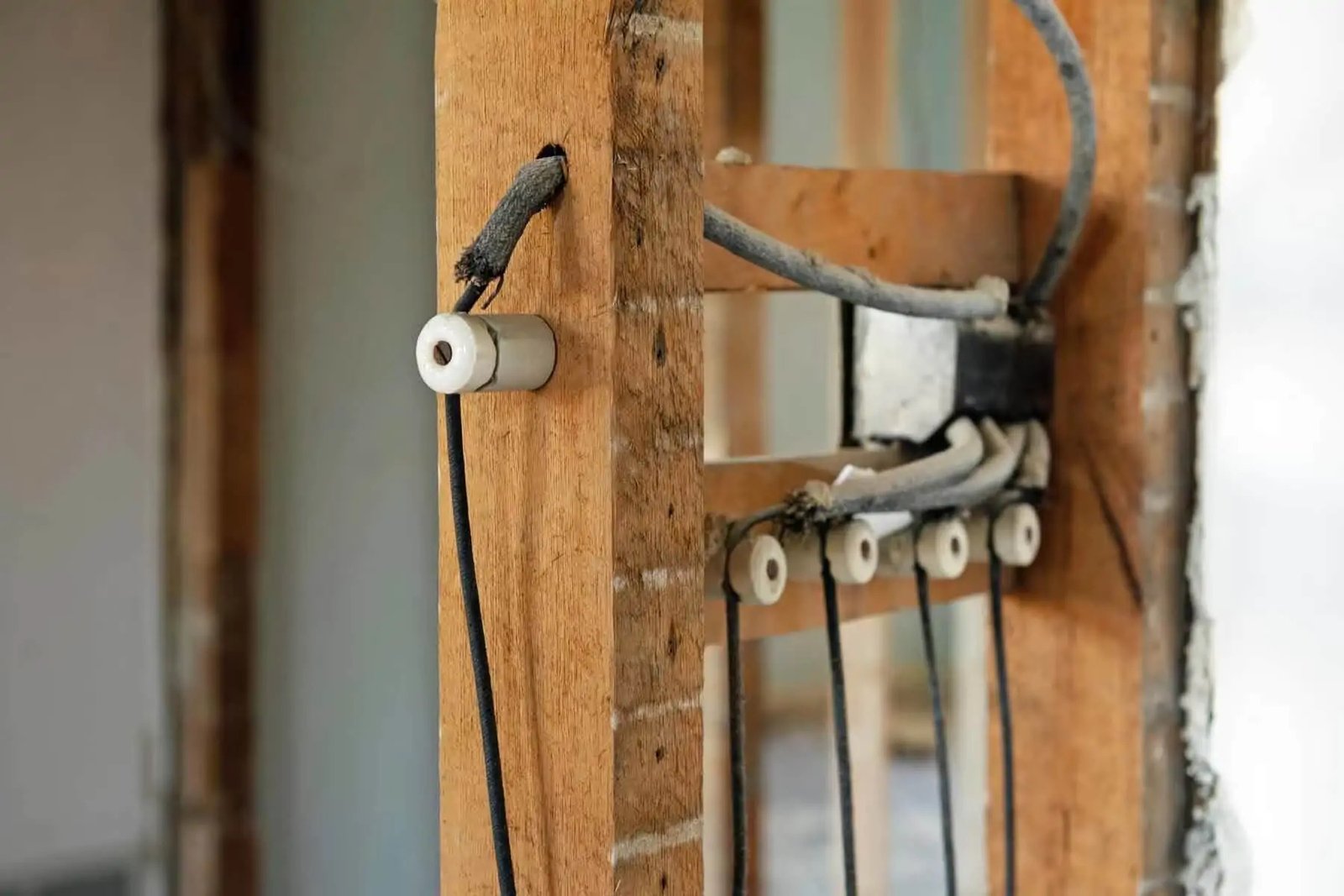
When discussing older homes in Canada, one electrical term often surfaces: knob and tube wiring. Commonly installed from the late 1800s to the 1940s, knob-and-tube electrical systems were once considered cutting-edge. However, in today’s world of modern appliances and strict safety codes, this once-standard electrical method is now a concern for many homeowners, buyers, and electricians alike.
If you’re buying an older home or live in one built before the 1950s, it’s crucial to understand what knob and tube wiring is, the risks involved, and how to handle upgrades or replacement. In this guest post, we’ll explore everything you need to know about knob and tube wiring in Canada.
What is Knob and Tube Wiring?
Knob and tube wiring, also known as K&T wiring, is an early standardized method of electrical wiring used in buildings. It consists of insulated copper wires run through ceramic knobs and tubes to keep them away from flammable materials and secure them in place.
There are two main components:
- Knobs: Hold the wires in place.
- Tubes: Protect wires when passing through wooden structures like studs or joists.
This system only used a hot and neutral wire, with no grounding wire, which is one of the major concerns today.
Why is Knob and Tube Wiring a Concern?
While knob and tube wiring was safe for its time, it poses several risks by modern standards:
- Lack of Grounding
Modern homes are grounded to protect people and electronics from electrical surges. Knob-and-tube wiring does not offer grounding, increasing the risk of electric shocks and fire. - Insulation Breakdown
The old rubber insulation used in knob and tube electrical systems deteriorates over time, exposing wires and creating fire hazards. - Incompatibility with Modern Loads
Homes today require more electricity than what knob and tube wiring was designed to handle. Overloading these circuits can result in overheating or electrical fires. - DIY Modifications
Over the decades, many homeowners or unlicensed handymen may have made unsafe modifications to knob-and-tube systems, further compromising safety. - Insurance Issues
Many Canadian insurance providers either refuse to insure homes with knob and tube electrical systems or charge higher premiums unless the wiring is replaced or inspected by a certified electrician.
Identifying Knob and Tube Wiring in Canada
If you suspect your home has knob and tube wiring, here’s how to identify it:
- Look in unfinished areas like basements or attics.
- Find ceramic knobs nailed to beams or joists.
- Look for white ceramic tubes where wires pass through framing.
- Wiring will typically appear as single black wires running separately, not bundled.
For safety, always have a licensed electrician confirm the presence and condition of the wiring.
Is Knob and Tube Wiring Legal in Canada?
Yes, knob and tube wiring is technically legal in Canada. However, many provinces have strict regulations and guidelines about its condition, load capacity, and usage. In some areas, it’s legal only if the wiring:
- Has not been modified.
- Is in good condition.
- Isn’t being used for high-load appliances.
Despite its legality, most knob and tube wiring in Canada is considered outdated and is recommended for replacement during renovations or real estate transactions.
Replacing Knob and Tube Wiring: What to Expect
Upgrading from knob and tube to modern wiring is a significant but essential investment for safety and functionality. The process involves:
- Removing old wiring.
- Installing modern NM (non-metallic) wiring with grounding.
- Updating the electrical panel if needed.
Costs vary depending on the home’s size, accessibility of wires, and the local labor market but expect anywhere between $8,000 to $15,000+ CAD.
Should You Buy a Home with Knob and Tube Wiring?
Buying a home with knob-and-tube wiring in Canada isn’t a dealbreaker, but it should prompt extra caution. Here’s what to do:
- Hire a licensed electrician for a full inspection.
- Request a quote for full or partial replacement.
- Negotiate the cost with the seller.
- Confirm with your insurance company that they’ll cover the property.
Insurance and Real Estate Implications
Homeowners and buyers often face complications when dealing with knob and tube wiring:
- Insurance companies may require inspection and certification.
- Some may mandate immediate replacement as a condition of coverage.
- Real estate transactions may be delayed or renegotiated due to wiring concerns.
Alternatives to Full Replacement
If full replacement isn’t immediately feasible, homeowners can explore:
- Partial upgrades: Focus on high-use or high-risk areas like kitchens and bathrooms.
- Protective breakers: Installing arc-fault circuit interrupters (AFCIs) for added safety.
- Professional inspections: Routine checks from licensed electricians can keep things safe temporarily.
Remember, these are temporary fixes and not substitutes for full replacement.
Conclusion: Safety Comes First
Knob and tube wiring is part of Canada’s architectural and electrical history, but it’s no longer suited for modern demands. If your home still uses knob-and-tube systems, or you’re considering buying a property that does, take the time to understand the risks and solutions available.
Whether you’re dealing with knob and tube electrical in Toronto, Vancouver, Calgary, or any other part of Canada, hiring a certified local electrician for an evaluation is your first step toward a safer, more efficient home. With today’s technology and high electricity usage, upgrading from knob and tube wiring in Canada is more than an investment—it’s a necessity.


